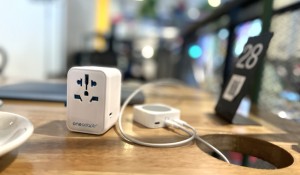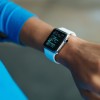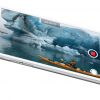Delta Airlines has been on the spree to make available the state-of-the-art technology to the customers. In yet another attempt to surpass its own standards Delta has decided to keep fueling its customers by committing to 2Ku, the fastest connectivity experience in the sky, by at least 350 aircraft. 2Ku is Gogo’s industry-leading in-flight Wi-Fi technology that provides consistent, uninterrupted coverage nearly anywhere in the world, including over oceans. This brings Delta’s total 2Ku commitment to more than 600 aircraft in its mainline fleet.
Installation of 2Ku will present customers with faster speeds and bandwidth more than 20 measures that of Gogo’s ATG technology, allowing for video streaming purposes. This summer, customers will be able to use Wi-Fi and in-flight entertainment from taxi and take-off through landing on 2Ku empowered aircraft.
Delta operates the world’s largest Wi-Fi-equipped fleet, with more than 3,500 connected flights daily, together with its entire fleet of 660 domestic mainline aircraft. More than 1,000 Delta aircraft, including a good number of Delta Connection two-class regional jets and 99 percent of its international fleet are equipped with in-flight Wi-Fi service, offering access to more than 370,000 customers per day.
“Delta customers have expressed an interest in their time in the air being as productive as their time on the ground, and 2Ku satellite offers a vastly upgraded in-flight Wi-Fi experience,” said Tim Mapes, Delta’s Senior Vice President and Chief Marketing Officer. “By committing to more aircraft with 2Ku technology, we’re providing Delta customers with faster and more reliable in-flight connectivity as a part of Delta’s commitment to always delivering the industry’s best onboard services.”
Delta Airlines rolled out its baggage handling RFID technology lately which has gained accolades around the world to substitute the old-fashioned barcode scanning system. 2Ku installations have already started on the 737-800 and A319 fleets, and additional Delta fleets will be retrofitted with the new system. By the end of this year, it aims to enable around 35 aircraft with 2Ku technology fully operational.
2Ku is next-generation technology that uses dual Ku-band satellite antennas – one receiver for the upward link to the aircraft, and the other for the downward, return link to the ground and presents reduced drag and fuel burn compared to other Wi-Fi systems. Gogo started working on its satellite-based service, 2Ku and in February signed a deal with satellite operator SES to provide capacity. Gogo has put forward a 2Ku proposal for 200 aircraft for AA, although no decisions have been made yet, Gogo president Michael Small said in a statement to Reuters.
Wi-Fi on U.S. domestic routes is already widespread although air-to-ground (ATG) technology can mean service is slow. Gogo’s 2Ku technology is designed to be open so it’s compatible with multiple satellite networks, which means the technology will be upgradeable over time without having to upgrade the aircraft. This flexibility will help ensure Delta is future ready and ahead of the curve from a technology perspective.
Competition from new satellite-based services has put more established aviation connectivity providers under pressure. In the cabin, having Wi-Fi connected systems also makes for easier upgrades of in-flight entertainment and can bring in more revenues from entertainment, services and advertising. Delta is on a lookout for an edge above others and let us watch them what they have in future for us.




















